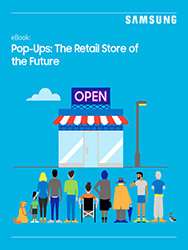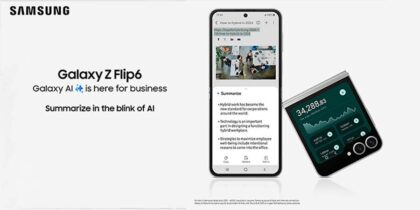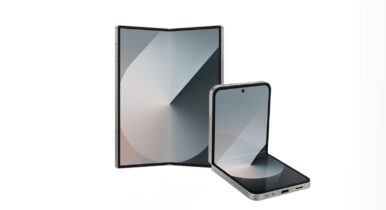This News Insight from Samsung Networks guides retailers on how to monetize Wi-Fi for customers in stores. Learn more about using the Internet of Things in a retail environment. — Samsung Insights editorial team
It wasn’t long ago that a visit to a coffee shop with free in-house Wi-Fi was considered to be a cutting-edge, almost upscale experience for patrons. Today, however, Wi-Fi access in retail spaces like shops, restaurants, and malls has become an expected amenity for most shoppers – an expectation that’s only rising among brick-and-mortar consumers.
As a result, store owners increasingly turn to wireless technology to provide customers with a more helpful and interactive shopping experience. While providing Wi-Fi for in-house shoppers comes with a cost, the price tag shouldn’t be considered a cut-and-dry expense. Instead, retailers should consider Wi-Fi to be an investment – one with a huge potential for return. This is where the practice of Wi-Fi monetization comes into play.
Monetizing Wi-Fi not only helps retailers recover the expense of offering the service to customers, the practice also offers valuable insight into their preferences and habits. This is priceless data for merchants who are both looking to compete with market rivals and who are also striving for a unique edge against online giants like Amazon and Overstock.
Ways to Monetize Wi-Fi
While there’s no one-size-fits-all approach to Wi-Fi monetization, there are several ways for retailers to achieve a solid ROI on their in-store Wi-Fi services. From traditional pay-to-play access to lead-generating tactics that produce highly specific consumer insight, there are a few ways to make the most of the investment.
- Paid User Access
Probably one of the earliest methods of recovering the cost of offering Wi-Fi was by simply charging customers to use it. However, caution should be used when practicing this approach as many now consider it to be a dated and one-dimensional tactic.
In a time where smartphone users are already paying mobile service providers for data and 4G coverage, it can be a tricky sell to convince them to pay more for basic in-store Wi-Fi (especially when they’re already paying the store for other products or services).
- Two-Tiered Approach
Similar to the paid access method is a two-tiered approach wherein the “bottom” tier of Wi-Fi service would be free, but a faster, broader Wi-Fi service would come with a fee. The two-tiered approach can be looked at a few different ways.
The first is where the retailer offers free Wi-Fi service to customers, but only for a limited amount of time. For example, a customer may use free Wi-fF for half an hour, but must pay a fee for each half hour thereafter.
Take Your Store to the Next Level
Discover how connected pop-ups can help you drive successful retail initiatives. Download Now
In the more common execution of this approach, the retailer offers a free, more basic Wi-Fi service to customers who only need internet access to check email or for basic social media browsing. However, customers who need higher bandwidth for other online activities like gaming or streaming video would have to pay for more premium service.
One key to executing a two-tiered approach is ensuring that paying customers receive bandwidth priority. When asking them to pay for better Wi-Fi service, you must be absolutely certain they’ll get what they paid for.
- Ad-Supported Access
Ad-supported access to in-store Wi-Fi is quickly becoming the preferred method for both retailers and customers. This approach allows shoppers to use a store’s Wi-Fi free of charge and still provides the retailer with revenue from advertisers.
Ads can be placed on the custom portal pages users must go through in order to access the service. (This is usually where the customer has to click to agree to some terms of use.) In-session ads are also possible, but must be used with caution – too many interruptive ads can degrade user experience. With that said, in-session ads can be immensely helpful for customers who are browsing through a large retail space like a shopping mall.
Wi-Fi Monetization Benefits for Retailers
Monetizing Wi-Fi use comes with a great deal of benefits for retailers beyond providing a revenue stream. Consider these potential pluses to offering in-house Wi-Fi service for customers:
- Analyze foot traffic patterns
Traffic analysis benefits retailers in multiple ways. For example, prime products can be placed in areas where foot traffic is heaviest. In larger retail spaces like shopping malls, customer positioning can be used to promote nearby sales. A returning customer who frequents one shop in particular can be immediately notified of special loyalty promotions as they connect to Wi-Fi. New visitors can be guided through the mall as they search for desired stores or products.
In the future, as advancements in location positioning become more and more precise, customers can be hyper-targeted in new ways.
- Custom portal pages are platforms for advertising and lead generation
As we mentioned above, custom portal pages can be used to push special deals, sales, promotions, or to highlight new products or services.
Portal pages can also be used to obtain customer information. For example, requesting a customer’s email address in exchange for complimentary wi-fi access is useful for email marketing and digital ad retargeting. Some portal pages require users to “sign in” to wi-fi access by using their social media profile’s credentials. This allows the retailer to have detailed insight into the customer’s preferences and habits, which some marketers believe is more valuable than dollar-based revenue.
A portal page can be thought of as a type of landing page where, for even just a short time, retailers can capitalize on a captive audience.
- Wi-Fi can be used as an extension of content marketing initiatives
Any brand-related web content such as blogs, videos, or apps can be promoted to those accessing Wi-Fi through portal pages.
Have a new blog on the site? Promote and link to it on the portal page. Has the company recently launched a new mobile app? Embed a download button right on the page for quick and easy access. Looking for a larger social media following? Users can be directed to social platforms directly from the page.
- Offering complimentary Wi-Fi promotes customer retention
The bread-and-butter of the retail experience is all about customer satisfaction. With all the bells and whistles that come with innovation and new technology, it can sometimes be easy to forget that a happy customer is a loyal customer.
- In-house Wi-Fi helps retailers compete with rivals
Whether shopping is completed online or in-person, brands must compete with one another in order to remain competitive in the market and to win customers. Thanks to increasing technological integration into the shopping experience, staying on top of retail trends is more important than ever, now and in the future.
Conclusion
In an age where speed, connectivity, and convenience are essential for a positive customer experience, brick-and-mortar retailers that fail to update technology and in-store amenities will fall to the wayside behind their more innovative competitors.
For more information about how in-store Wi-Fi maximizes marketing potential and profits, schedule a consultation with a Samsung business Wi-Fi expert now.
To draw in new customers, many stores are turning toward experiential retail, which relies on technology like mirror displays and digital signage to attract shoppers.








